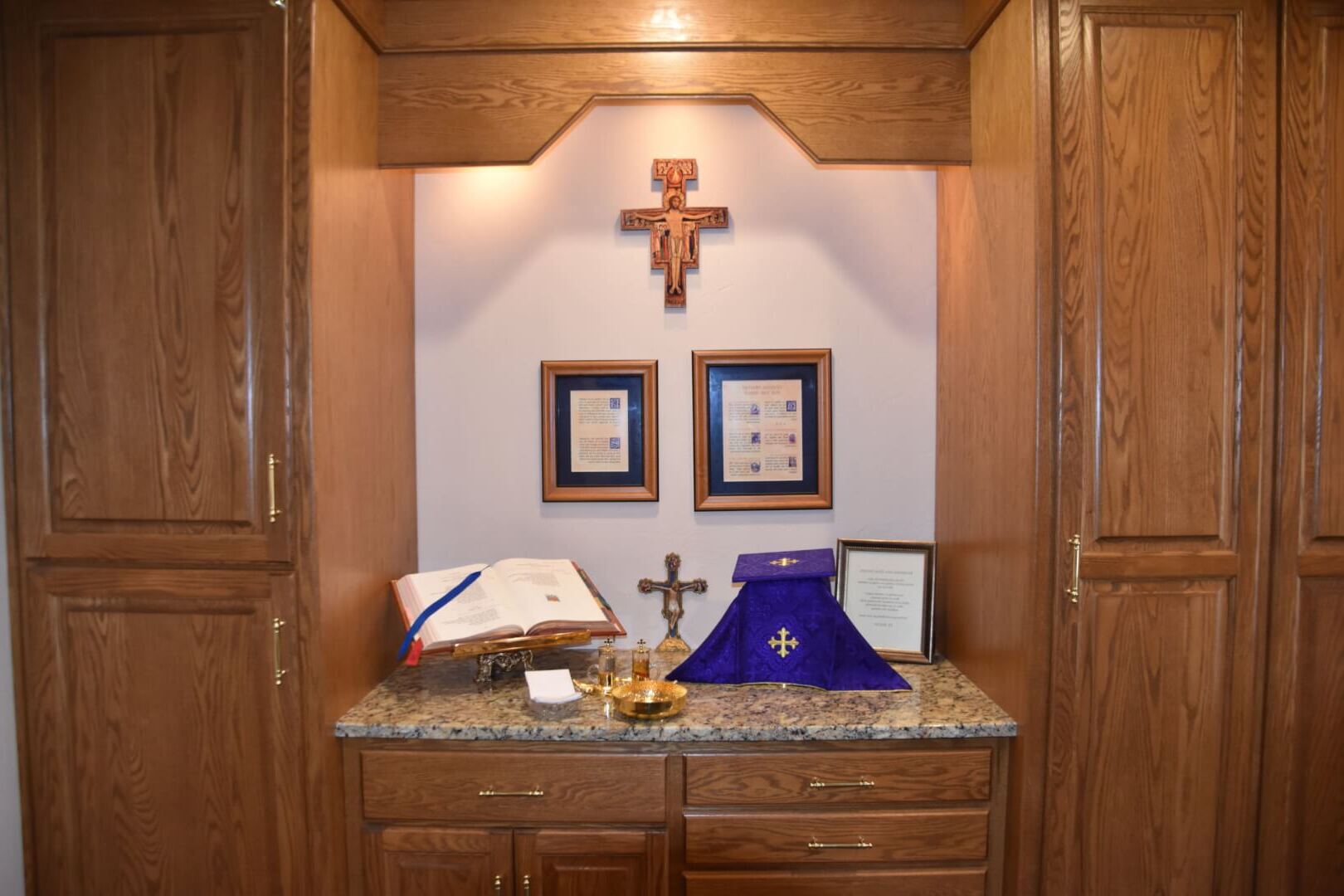
Ever wondered what goes on behind the scenes in a church? A sacristy is where the magic happens. This special room, often tucked away near the altar, is where clergy prepare for services and store sacred items. From vestments and altar linens to chalices and candles, everything needed for worship is kept here. The sacristy isn't just a storage room; it's a blend of the sacred and the practical. It’s a place where the mundane tasks of ironing vestments and polishing vessels meet the spiritual preparation for worship. Curious about what makes this room so essential? Let's dive into the fascinating world of sacristies.
What is a Sacristy?
A sacristy is a special room in a church where sacred objects, vestments, and liturgical items are stored and prepared for worship services. This space plays a crucial role in the smooth running of church activities.
-
Definition and Purpose: A sacristy is a room where clergy and church officials store and prepare liturgical items like vestments, altar linens, and sacred vessels. It ensures everything needed for worship is in good condition.
-
Historical Background: The idea of a sacristy dates back to early Christian times. Initially, sacred objects were kept near the altar, but over time, this evolved into a dedicated room.
Location and Layout
The placement and design of a sacristy can vary, but certain features are common across many churches.
-
Location: Sacristies are usually located near the altar or in a separate building adjacent to the main church. This proximity ensures easy access during services.
-
Layout: The layout can differ based on the church's size and design. Common features include shelves for vestments, cabinets for sacred vessels, and tables for preparation.
Storage and Preparation of Liturgical Items
A sacristy is a hub for storing and preparing various items used in worship.
-
Storage of Liturgical Items: Sacristies store a wide range of items, including vestments, altar linens, sacred vessels, candles, and Bibles.
-
Preparation of Liturgical Items: Key tasks include ironing vestments, polishing sacred vessels, and preparing altar linens to ensure they are ready for use.
Symbolic and Practical Significance
Beyond its practical uses, a sacristy holds deep symbolic meaning.
-
Symbolic Significance: The sacristy represents a space where the sacred and mundane coexist, highlighting the preparation for worship services.
-
Clerical Use: Primarily used by clergy and church officials, sacristies provide a quiet space for prayer, reflection, and preparation before services.
Maintenance and Security
Keeping a sacristy in good condition is essential for the church's operations.
-
Secularity vs. Sacral Space: While sacred, sacristies also contain secular items like cleaning supplies, blending the sacred and mundane aspects of church life.
-
Maintenance and Cleaning: Regular cleaning, dusting, and polishing are crucial for maintaining the sacristy's items.
-
Security Measures: Sacristies often have security measures like locks and alarms to protect valuable items.
Training and Community Involvement
Education and community involvement play a role in the sacristy's function.
-
Training and Education: Churches often provide training on the proper use and maintenance of sacristy items, ensuring everyone knows their roles.
-
Community Involvement: Volunteers may help with tasks like cleaning or preparing liturgical items, fostering a sense of community.
Architectural and Historical Aspects
The design and history of sacristies can vary widely.
-
Architectural Design: Sacristies can range from small and simple to elaborate and ornate, depending on the church's style and era.
-
Historical Preservation: Many historic churches preserve their sacristies to maintain their original character, often containing artifacts from past centuries.
-
Modernization: Modern sacristies may use technology for inventory management and incorporate sustainable practices for cleaning and maintenance.
Liturgical and Cultural Significance
Sacristies reflect the liturgical traditions and cultural heritage of the church.
-
Liturgical Traditions: Different denominations have unique practices and items stored in the sacristy, reflecting their liturgical traditions.
-
Cultural Significance: Sacristies often mirror the artistic and architectural styles of their time, offering a glimpse into the church's history and traditions.
Accessibility and Seasonal Changes
Sacristies adapt to the needs of the church and its congregation.
-
Accessibility: While primarily for clergy, some sacristies are accessible to the congregation through tours or educational programs.
-
Liturgical Year: The layout and contents of a sacristy can change throughout the liturgical year, with items for specific holidays or seasons stored in designated areas.
Sacred Objects and Vestment Care
The sacristy is home to many sacred objects and requires careful maintenance.
-
Sacred Objects: Items like relics, icons, and other sacred objects are stored in the sacristy, each with its own significance.
-
Vestment Care: Clergy vestments are washed, dried, and ironed in the sacristy to maintain their quality and appearance.
Altar and Clerical Preparation
Preparing the altar and clerical attire is a key function of the sacristy.
-
Altar Preparation: The altar is set up in the sacristy before each service, including arranging linens, sacred vessels, and candles.
-
Clerical Attire: Clergy attire, such as vestments and mitres, is prepared in the sacristy, ensuring everything is ready for the service.
Community Rituals and Archival Storage
Sacristies also play a role in community rituals and historical preservation.
-
Community Rituals: Beyond worship services, sacristies may be used for prayer vigils or other special events.
-
Archival Storage: Some sacristies store historical documents and records related to the church, often in climate-controlled environments to preserve their condition.
Educational Programs and Volunteer Opportunities
Education and volunteering are integral to the sacristy's function.
-
Educational Programs: Many churches offer programs that teach about the history and significance of liturgical items and practices.
-
Volunteer Opportunities: Volunteers can help with tasks like ironing vestments or polishing sacred vessels, contributing to the sacristy's upkeep.
Symbolic Representation and Evolution
The sacristy represents a bridge between the mundane and the sacred, evolving over time.
-
Symbolic Representation: The sacristy symbolizes the transition from everyday activities to the sacred space of worship, serving as a threshold between the two.
-
Evolution Over Time: From simple storage rooms to elaborate spaces reflecting modern practices, sacristies continue to adapt to meet the changing needs of churches.
The Heart of Church Life
A sacristy is more than just a storage room; it's a vital part of church life. From storing vestments and sacred vessels to preparing altar linens, this space ensures everything is ready for worship. Its historical roots and symbolic significance highlight its importance in religious traditions. Whether it's ironing vestments, polishing chalices, or providing a quiet space for clergy reflection, the sacristy blends the sacred with the everyday. Modern sacristies even incorporate technology and sustainable practices, showing their evolution over time. They also offer opportunities for community involvement and educational programs. Each sacristy, with its unique layout and contents, reflects the traditions of its church. So, next time you visit a church, remember the sacristy’s role in making worship possible. It’s a small room with a big impact.
Was this page helpful?
Our commitment to delivering trustworthy and engaging content is at the heart of what we do. Each fact on our site is contributed by real users like you, bringing a wealth of diverse insights and information. To ensure the highest standards of accuracy and reliability, our dedicated editors meticulously review each submission. This process guarantees that the facts we share are not only fascinating but also credible. Trust in our commitment to quality and authenticity as you explore and learn with us.


